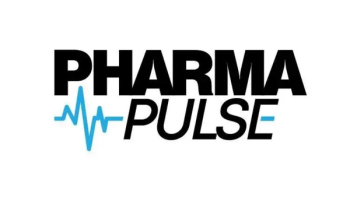
Does Frequency of a Myalgic Encephalomyelitis/Chronic Fatigue Syndrome-Like Illness Vary Between Those with Differing COVID Test Results?
A cohort study investigates whether or not the prevalence of these types of illnesses can vary among individuals who are COVID-positive versus negative.
Chronic medical syndromes can take place following various acute infections, such as post–Epstein Barr virus syndrome and postpolio syndrome.1,2 Known as postacute infection syndromes (PAISs), they present similar symptoms, such as cognitive issues, an intolerance to exertion, and functional impairment related to fatigue. One condition—Myalgic encephalomyelitis/chronic fatigue syndrome (ME/CFS)—is quite characteristic of PAIS, with it being a debilitating condition that is related a prior acute influenza-like illness.3,4
As many may know, fatigue also happens to be a common symptom among patients experiencing post-COVID condition or long COVID (also known as postacute sequelae) so when compared alongside one another, the symptoms of COVID-19 and other PAISs overlap quite a bit with that of ME/CFS. Since this suggests that many patients could be affected, a study published in JAMA Network Open5 sought to analyze the occurrence of ME/CFS among Innovative Support for Patients with SARS-CoV-2 Infections Registry (INSPIRE) individuals after experiencing a symptomatic acute illness that caused them to conduct a COVID-19 test. The odds of ME/CFS in the COVID-19–positive cohort and the COVID-19–negative cohort were then compared.
This multisite, longitudinal cohort study enrolled INSPIRE patients from Dec.11, 2020, to Aug. 29, 2022, ages 18-64 years, who were not only experiencing acute symptoms similar to that of SARS-CoV-2 infection, but who were provided with an FDA-approved SARS-CoV-2 test at the time and did not pass away or remove themselves from the study by three months. Investigators conducted follow-up surveys through Feb. 28, 2023.
In total, the study consisted of 4,738 participants, with females representing 3,226, or [68.1% of the total; their mean (SD) age was 37.8 (11.8) years. The survey’s completion rates varied from 38.7% (1,835 of 4,738 participants) to 76.3% (3,613 of 4,738) and decreased as time went on.
The weighted proportion of individuals that identified with an ME/CFS-like illness did not drastically change at month 3 through month 12 of follow-up, which was comparable to the COVID-19–positive (range, 2.8%-3.7%) and COVID-19–negative (range, 3.1%-4.5%) groups. Also, adjusted analyses did not show any significant difference in the odds of ME/CFS-like illness at any time point between COVID-19–positive and COVID-19–negative individuals (marginal odds ratio range, 0.84 [95% confidence interval CI, 0.42-1.67] to 1.18 [95% CI, 0.55-2.51]).
As a result, the investigators concluded that, “In this prospective, multicenter cohort study of participants with acute infection–like symptoms prompting SARS-CoV-2 testing, the prevalence of ME/CFS symptoms was similar between COVID-19–positive and COVID-19–negative individuals. At 12 months, 2.8% of those in the COVID-19–positive group and 4.5% in the COVID-19–negative group met the definition of ME/CFS. Our findings suggest that ME/CFS may follow several precipitating events (acute COVID-19 illness, other acute infections, or life disruptions due to the COVID-19 pandemic) but that regardless of reason or exact percentages, there will be millions affected who will seek care.”
References
1. Choutka J, Jansari V, Hornig M, Iwasaki A. Unexplained post-acute infection syndromes. Nat Med. 2022;28(5):911-923. doi:
2. Komaroff AL, Bateman L. Will COVID-19 lead to myalgic encephalomyelitis/chronic fatigue syndrome? Front Med (Lausanne). 2021;7:606824. doi:
3. Kujawski S, Zalewski P, Newton JL. Do some long COVID patients suffer from ME/CFS?Medical Research Journal. 2021;6(4):279-280. doi:
4. Naess H, Sundal E, Myhr KM, Nyland HI. Postinfectious and chronic fatigue syndromes: clinical experience from a tertiary-referral center in Norway.In Vivo. 2010;24(2):185-188.
5. Unger ER, Lin JS, Wisk LE, et al. Myalgic Encephalomyelitis/Chronic Fatigue Syndrome After SARS-CoV-2 Infection. JAMA Netw Open. 2024;7(7):e2423555. doi:
Newsletter
Stay ahead in the life sciences industry with Pharmaceutical Commerce, the latest news, trends, and strategies in drug distribution, commercialization, and market access.




